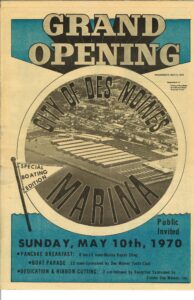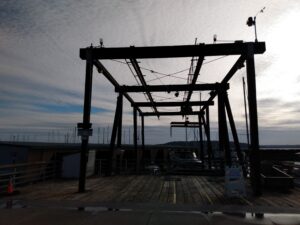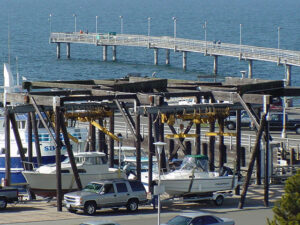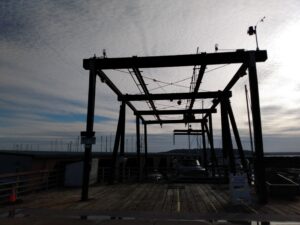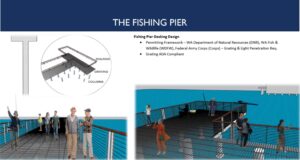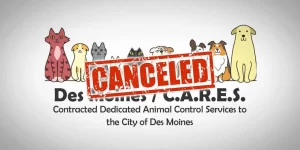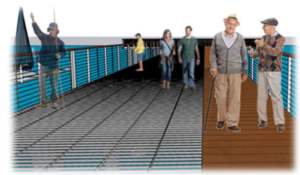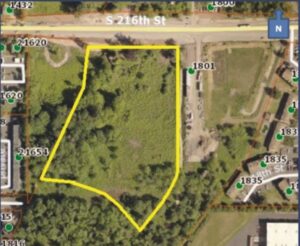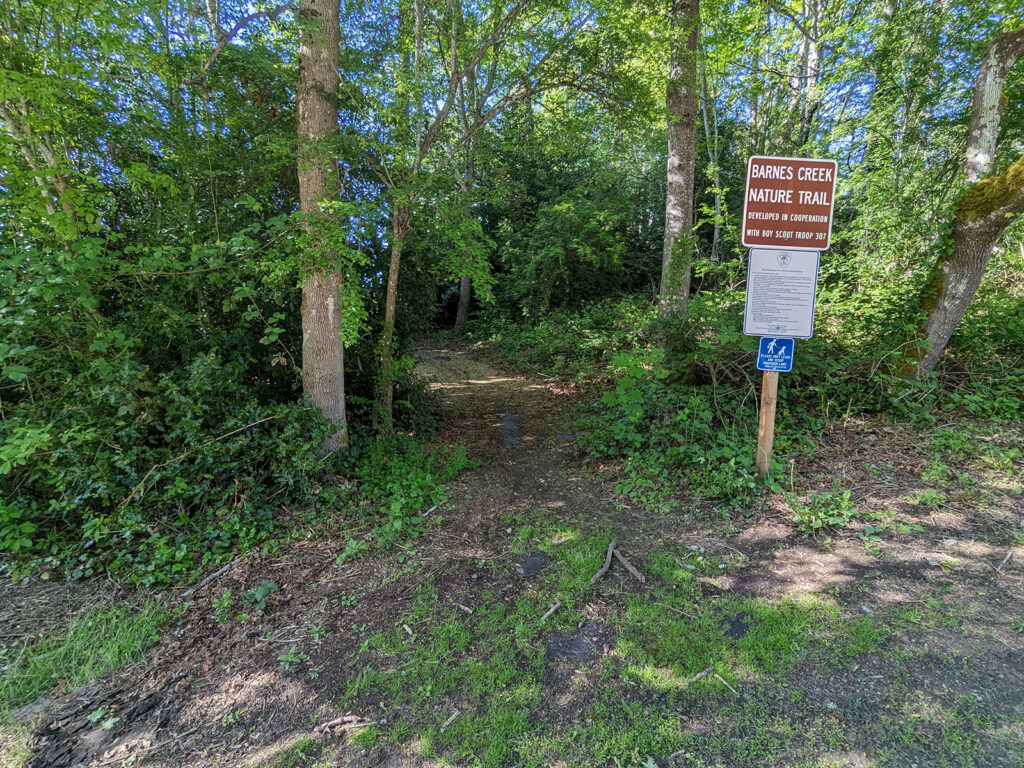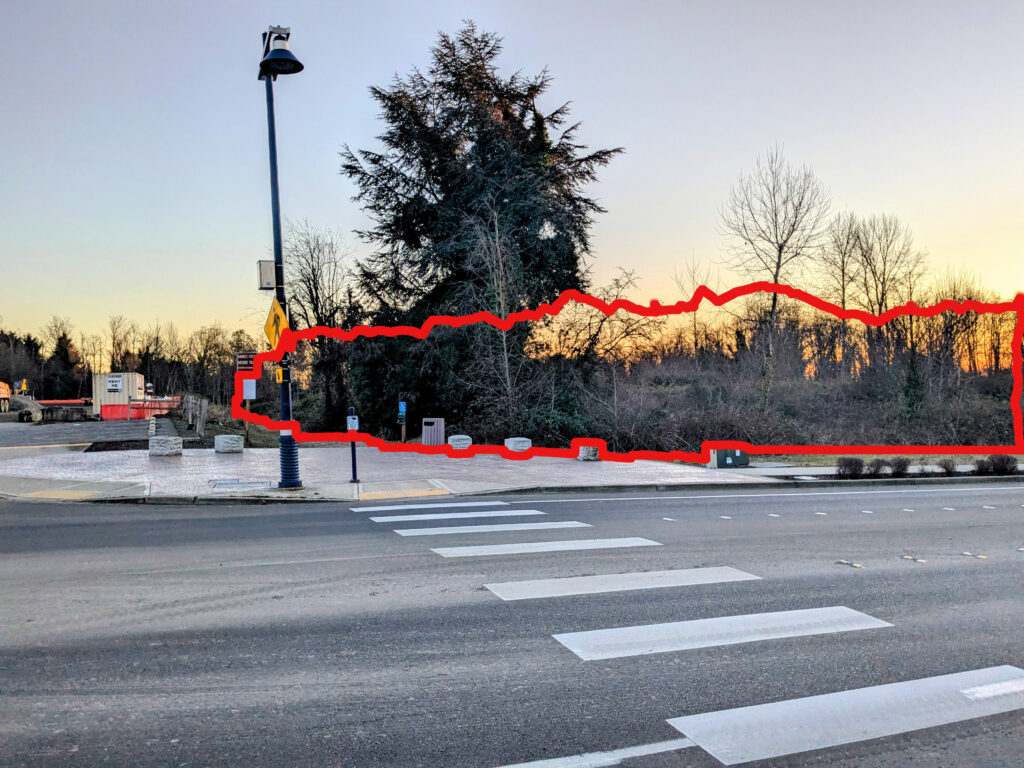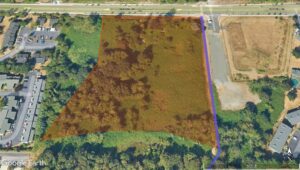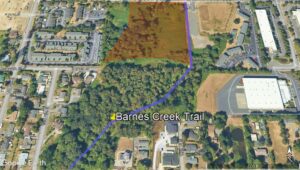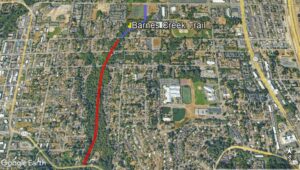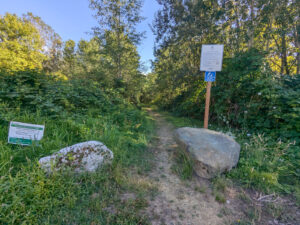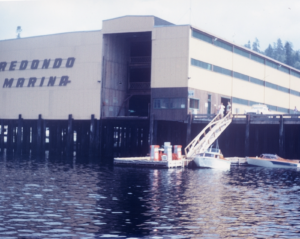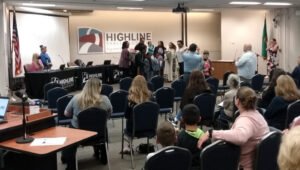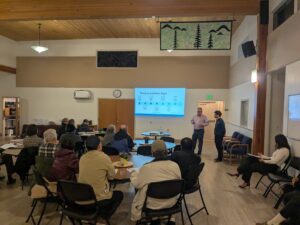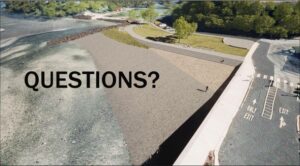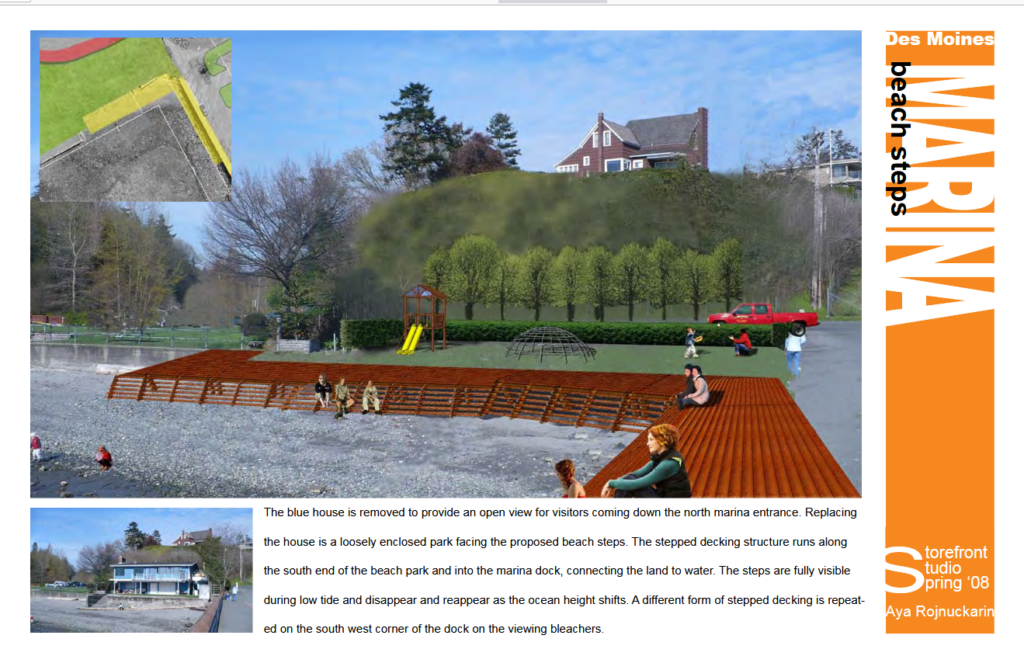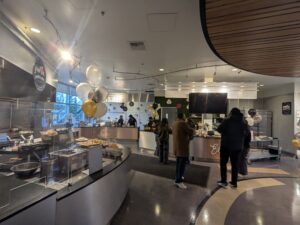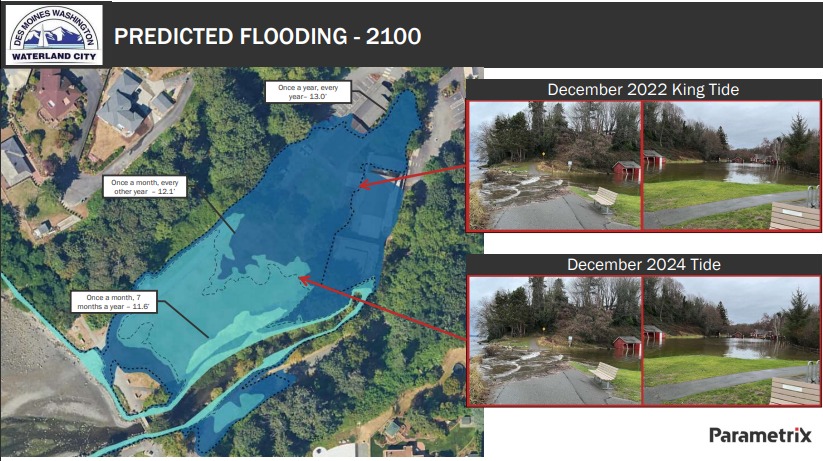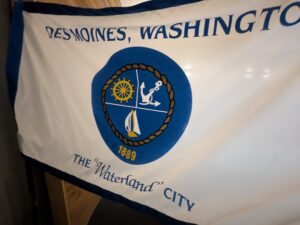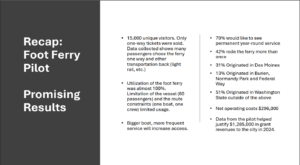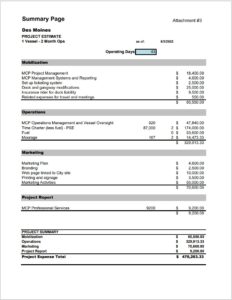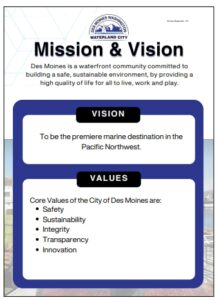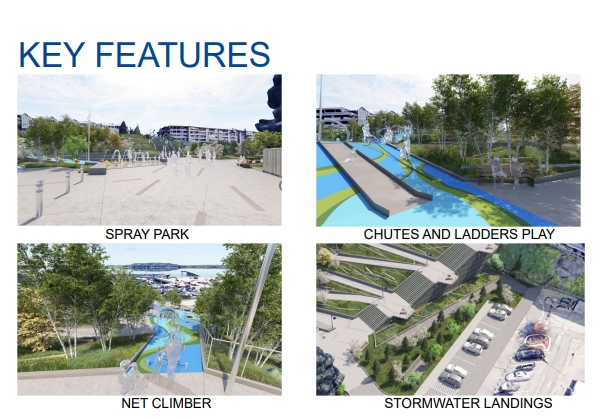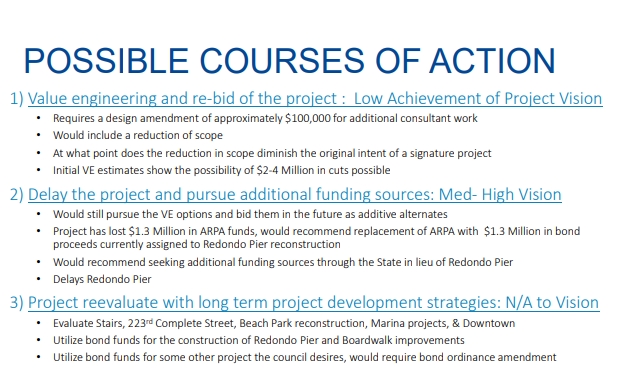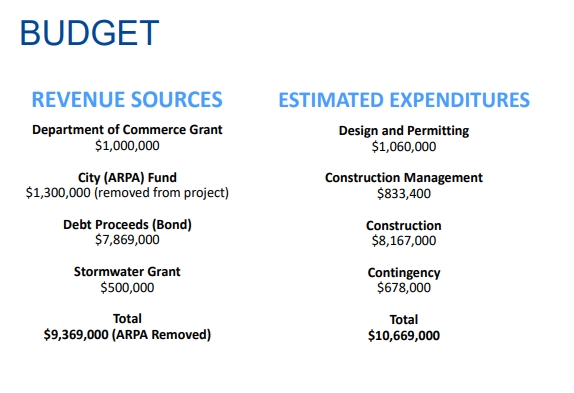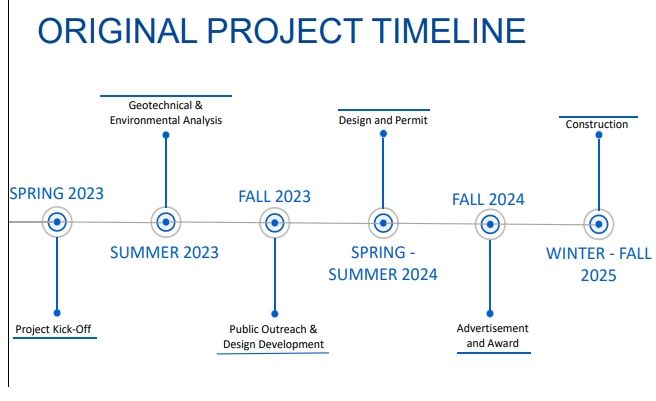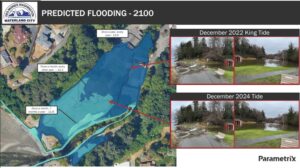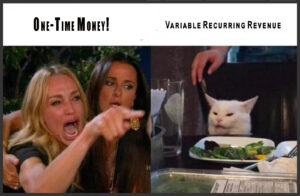Some bits of business…
Future Agendas is the closest thing the City currently has to a calendar of upcoming City Council topics. It’s not dynamic, ie. you have to click it every time you want to see a new version. And it’s not always accurate. But until we develop a genuine calendar, this can be very useful if there is a particular issue you don’t want to miss.
Important change: City Manager Caffrey has adopted a new format. Good news? Much more colourful! Bad news? Super short-term. However, thanks to moi, you can track each committee’s planning calendar here. 🙂
Traffic:
As part of the SR-509…
I-5 lane closure information
- Monday, Feb. 24 through the morning of Friday, Feb. 28: 9 p.m. to 4 a.m. – Up to three lanes of northbound I-5 will close nightly between SR 516 (Exit 149) and South 200th Street/Military Road South (Exit 151).
- Wednesday, Feb. 26 through the morning of Friday, Feb. 28: 11:59 p.m. to 6 a.m. – Up to four lanes of southbound I-5 will close nightly between South 200th Street/Military Road South (Exit 151) and SR 516 (Exit 149).
I-5 ramp closure information
- Monday, Feb. 24 through the morning of Wednesday, Feb. 26: 9:30 p.m. to 3:30 a.m. – The northbound I-5 to SR 516 off-ramp will close nightly. A signed detour will be in place.
SR 516 lane closure information
- Monday, Feb. 24 through the morning of Wednesday, Feb. 26: 8 p.m. to 5 a.m. – One lane of westbound SR 516 will close nightly between SR 99 and Military Road South.
- Wednesday, Feb. 26 through the morning of Friday, Feb. 28: 8 p.m. to 5 a.m. – One lane of eastbound SR 516 will close nightly between Military Road South and SR 99.
South Link Metro Survey
As Link light rail expands farther south with three new stations in Kent Des Moines, Star Lake and Downtown Federal Way, the South Link Connections project aims to improve transportation options for communities in South King County. Please take this Survey!
City Manager Stuff
City Manager’s Report February 21, 2025
When will the recipes stop? 😀 Hopefully after I run out of new piccies to take of this place. OK, it’s Slow Cooker Beef, so what’s not to love. 🙂
Parks and Recreation is hiring referees for the upcoming Youth Soccer
Season. These positions would start in April through Mid-June in evenings and weekends. https://desmoineswa.gov
The calendar of events is also good. Although it’s a band-aid.
 No, I’m not. Every one of these weekly updates seems to have a theme and this one is: band-aids. The City will be getting a new web site at some point soon. What it always needed was a truly integrated calendar. I guess that’s considered a ‘big city’ feature. But it’s not. It’s also something we can do for cheap that will set us apart. There are more cool things going on than any City employee can track or distribute. What the City should do is pay the dough once to create a ‘feed’ – an automatic way to capture events from every organisation that matters. For example, King County Library has interesting stuff going on all the time. We simply need to work with them (and anyone who gets a grant with the City), to make sure their web site automatically posts stuff to the City calendar.
No, I’m not. Every one of these weekly updates seems to have a theme and this one is: band-aids. The City will be getting a new web site at some point soon. What it always needed was a truly integrated calendar. I guess that’s considered a ‘big city’ feature. But it’s not. It’s also something we can do for cheap that will set us apart. There are more cool things going on than any City employee can track or distribute. What the City should do is pay the dough once to create a ‘feed’ – an automatic way to capture events from every organisation that matters. For example, King County Library has interesting stuff going on all the time. We simply need to work with them (and anyone who gets a grant with the City), to make sure their web site automatically posts stuff to the City calendar.
We coulda done this years ago. And I’m snippy because we need our next web site to be better than everyone else-something that will save everyone time, not simply playing catch up and creating more work for staff.
This Week
Wednesday: StART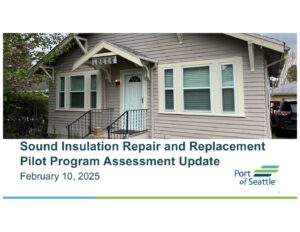 (Agenda). The Port has already completed its SIRRPP survey, ie. its evaluation of Port Packages. As expected, it was a sham, claiming that none of the homes they tested merit an update. Of course, they hand-picked 30 out of 9,400 for testing. Follow Sea-Tac Noise.Info (STNI) for coverage – and contact STNI, if you have bad sound insulation.
(Agenda). The Port has already completed its SIRRPP survey, ie. its evaluation of Port Packages. As expected, it was a sham, claiming that none of the homes they tested merit an update. Of course, they hand-picked 30 out of 9,400 for testing. Follow Sea-Tac Noise.Info (STNI) for coverage – and contact STNI, if you have bad sound insulation.
Thursday: Municipal Facilities Committee (cancelled)
Thursday: Economic Development – 27 Feb 2025 – Agenda Highlights:
- Charm Factor. Apparently, this is a beautify the downtown idea – it specifically mentions using decorative screens to cover ‘the Pit’ and the Des Moines Yacht Club boat storage on MVD and getting it done in time for FIFA 2026. In principle, I have no objection. The design has echoes of the very cool 2008 UW Storefront Studio project ideas. However, I do have several concerns. This issue follows the band-aid theme. Over the years, we’ve done these sorts of beautification deals several times and they are not major economic drivers. Sorry. I know how much people want to believe that, but if you look at regional neighbourhoods that really have transformed themselves, it happened inside-out, not outside-in. In other words, people show up for the business, not the wrapper. Based on the Special Meeting the Council had a few weeks ago, I saw no evidence that FIFA will provide economic benefits no matter what we might do. My hope is that my colleagues will look at our limited resources and really think about giving the City Manager time to come up with something long term. I’d rather save up as much dough as possible for that discussion. Or to put it more directly: the problem we should finally address is not how to cover up ‘the pit’. It’s the pit.
- Sound Code: The City is tackling the subject of re-instating a sound code, ie. building requirements to reduce the interior noise level from the airplanes. We dumped that in 2012 for political reasons. This gets me into hot water with our building people, but re-instating it is not rocket surgery. And I’ll use the golf/computer/ analogy. You buy even el-cheapo golf clubs or TVs or computers today and they’re objectively better than golf clubs or TVs or computers from twenty years ago. Building materials have improved — including windows. Construction practices have improved. So even without a sound code a new house is likely gonna be ‘quieter’ than a house built in 2000. And you won’t get help from the FAA because, despite tens of thousands more flights they think the entire area is getting quieter! So much so they’ve scaled back the area eligible for sound insulation by two thirds. Problem solved!
- Not really. The FAA’s metrics, based on ’65db were always rubbish. The numbers were based on what was affordable given the technology of the 1970’s. Now that building materials are better/cheaper, no waaaay should that still be the standard.
- Every scientific study done since then makes it clear than the noise we endure is unhealthy. Not ‘annoying’, bad for your health.
- There is also this: by ending our sound code, we essentially took ourselves off the table from future FAA funding. And to explain why in one sentence, here is a real question I got from a congressman five years ago.
Why should any member of congress vote to spend more money for sound insulation, when your city voluntarily decided it did not need it?
Thursday: City Council Regular Meeting – 27 Feb 2025 – Agenda Highlights:
- City Manager presentation on Flag Triangle. Unfortunately, there is no preview in the packet, so I refer you to last Municipal Facilities meeting. (Video). Obviously, we gotta fix the flag pole. And the Des Moines Memorial Drive Preservation Association has long wanted a plaque commemorating DMMD’s role in World War I and veterans. However, there has been some tension on both the cost and what the site should ‘be’. At that last MFC meeting, the Director of Public Works referred to it as a monument and I think that’s a much better way to view it than as a ‘park’.
The cost is currently $474k-ish? Probably a lot more. But it does not bother me as much as perhaps it should. After a while you start to get numb because the cost of anything ‘park-adjacent’ these days, is ridonculous. But if you say, “Hey, can’t we get something on DiscountFlagPoles.com?” one sounds insensitive. Just know that, in the back of my mind there is a little voice wishing that were the case. My real grouse is that we haven’t been consistent in presenting the costs or the idea or the purpose to the public. As I said last time, the new DPW started referring it as a ‘monument’ rather than a ‘park’ and IMO, that’s the right vibe.
- There will also be the first of two Executive Session evaluations of our new City Manager. Which is two more than we often got in a year with our last one. 😀 One sentence: the Council wanted a good communicator. Ms. Caffrey is a great communicator. 🙂 But speaking of band-aids, in one sense, this review may be perhaps a bit too early. Ms. Caffrey was immediately confronted with work more akin to an ER Surgeon than a day to day ‘manager’. She got smacked in the face with some time-sensitive, big ticket issues like the Marina and the airport SAMP, neither of which she had any background on – and neither of which were mentioned in her job interview.If I were ‘the boss’ I’d ask her to write her review of Des Moines, if not now, at the six month point.I’m also curious what you, Dear Reader, think of how things are going at the moment. Some of the initial joy in hiring Ms. Caffrey is wearing off and the realities of a tighter budget is starting to sink in. Please let me know what I should be asking about in this review process. 🙂
Last Week
Tuesday/Wednesday/Friday: I testified on behalf of two airport bills, including Senator Orwall’s SB5682 in the Environment Committee Tuesday @ 1:30PM and Rep. Sharlett Mena’s HB1303 in Appropriations on Wednesday and in the Senate Environment on Friday.
Wednesday/Thursday: I attended Association of Washington Cities Action Days! Which isn’t as exciting as that sounds. But I did get to hear some interesting takes on housing and public safety. And here are three quick takes.
- There are two bills working on giving a teensy portion of the sales tax back to cities explicitly for public safety. I totally support this because it’s not a new tax. It’s the State giving money back to cities. 🙂
- I used to have real arguments with the last police chief over organised crime involving teens – which he swore was not a thing. I hate being ‘that guy’, but anyone from Ireland would be skeptical because the shoplifting and auto theft here is suspiciously like what one sees in Dublin. A boss gets a bunch of 13 year olds to do the crimes – because they won’t do the time – even if they have a gun. It’s big business. But we’re behaving just like my home. A certain percentage of legislators will not put teens behind bars no matter how many times they get caught. I’m not sure what the answer is, but I’m glad to hear police and legislators calling it for what it is.
- It used to be that AWC could present a unified lobbying position on most issues. That is no longer the case. For example, every year the state puts forward new legislation to encourage more housing — which I strongly support. But the legislation never comes with what we actually need – which is M.O.N.E.Y. or at least building code reform. Instead, it graciously allows cities to provide developer discounts (which reduces our revenue) or lets us create local taxes. More affluent cities (like Redmond) find these useful. Cities like Des Moines? Not so much. We must have money because the fact is, developers struggle to build stick frame houses at anything like an affordable price point. We either have to start allowing for pre-built housing (which is cheaper, better constructed) or we get funding to make up the difference.
- There was also HB1334. Almost every city, including Des Moines, officially supports giving City Councils the ability to raise property taxes up to 3% without a public vote. But don’t hate the playa, hate the game. Over time the State and County have reduced the amount of money they share with cities like Des Moines and keep more of it for their own needs and especially education. All worthy endeavours. However, as with housing, one could also see a system which kicks back more of existing State and County money to cities like Des Moines. But since that will never happen, cities like Des Moines are left to try anything they can to raise taxes — including this. Desperate times, and so on… Speaking as one person, I do not support these bills. I think most voters find anything like this (including the 2023 bonds) a bit sneaky. People like to have a vote. They like to be sold.
- While I had time to kill I stumbled into a hearing on HB1923 Passenger Ferries: House Transportation – TVW which absolutely blew my mind. Check out the bill summary. Both our lobbyist and our paid ferry consultant (who did not identify himself as such) testified in favour.
HB 1923 would allow a city like Des Moines to establish its own ‘ferry district’, apply for money to buy boats (you need at least two) and create a taxing authority (ie. tax residents to cover the cost!) And it provides no feasibility study or proof that the agency can actually afford to run the thing.
What killed me were the number of people testifying that how we must get this passed in time for FIFA World Cup in 2026 or we’ll miss out on all the economic development opportunities! No one seemed to notice that there is literally no such boat in the water anywhere. Not. One. The first delivery in the US, is not expected until 2027.
Look, I understand how gaga people get about ‘ferries’. But when America started building roads, there were at least a few, you know, functioning automobiles in service at the time.
I want to applaud Representative Julia Reed. Even without knowing a thing about our experience, she asked all the right questions. I hope she, and the Transportation Committee, investigate Des Moines before passing any such bill.
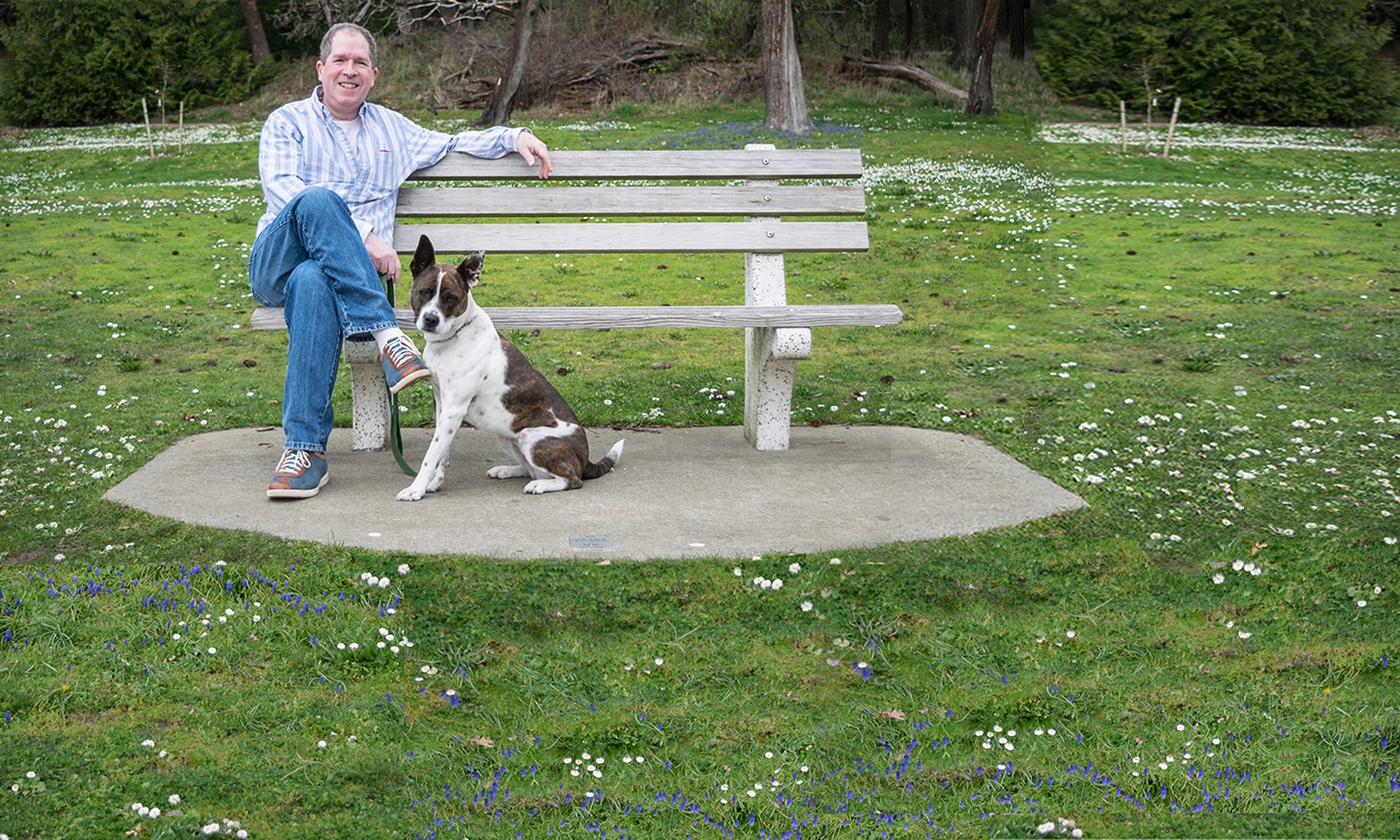

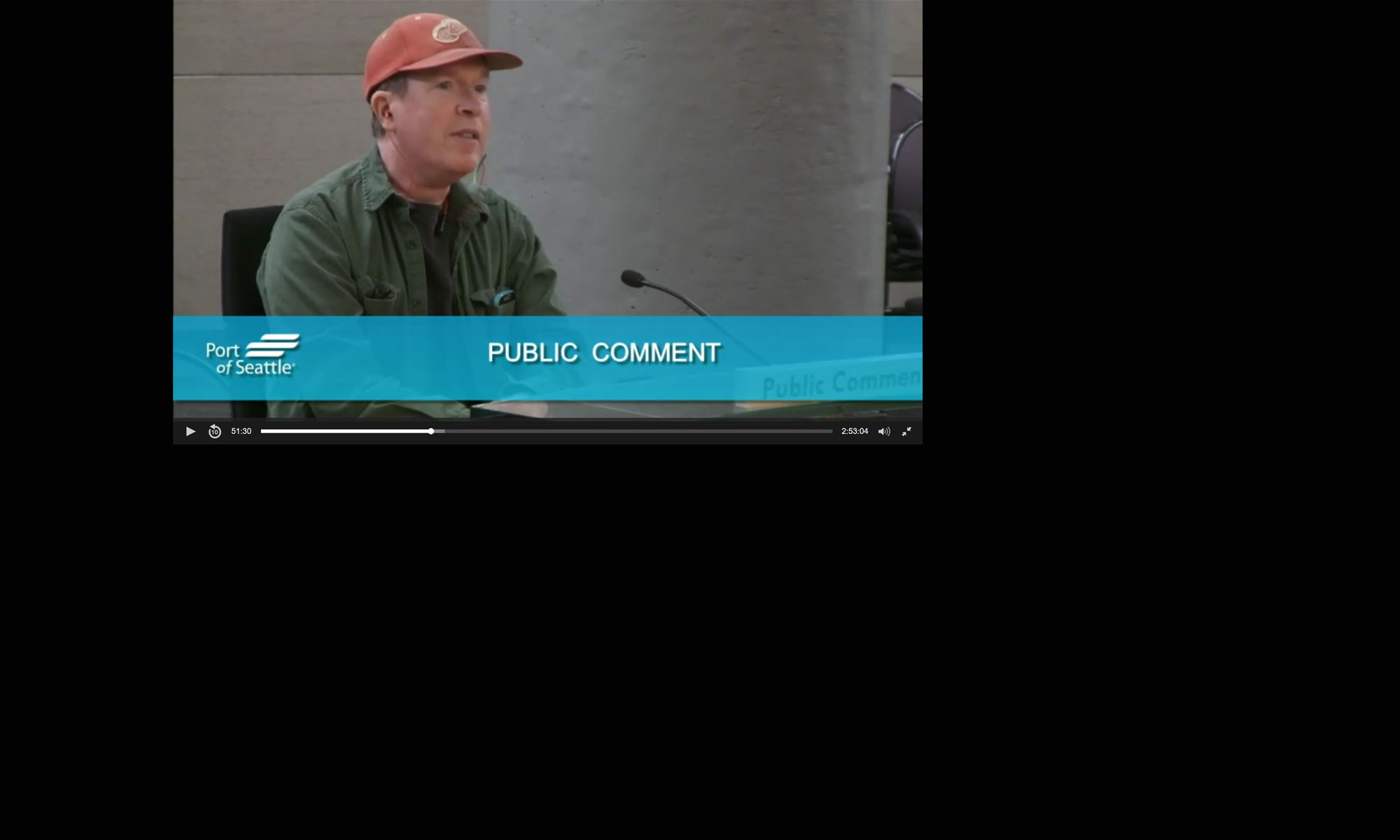
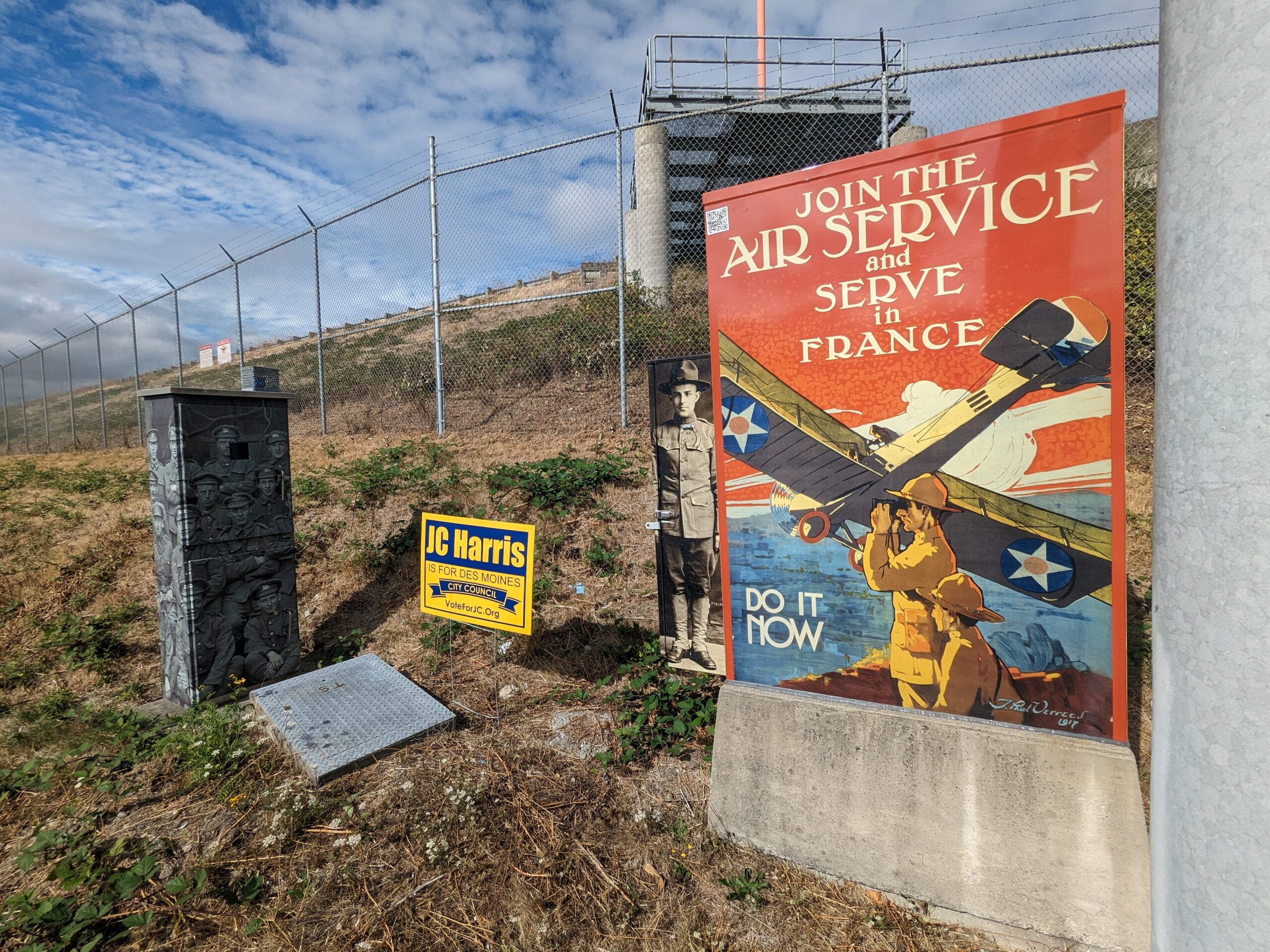
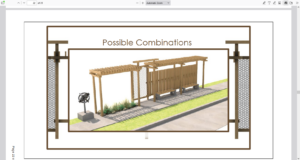

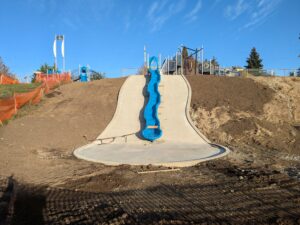

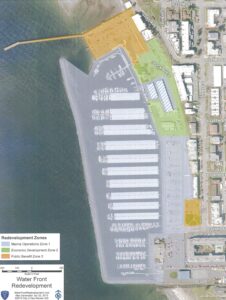
 Councilmember Mahoney proposed that the City do something in concert with the Highline MAST center to help make Des Moines the
Councilmember Mahoney proposed that the City do something in concert with the Highline MAST center to help make Des Moines the 